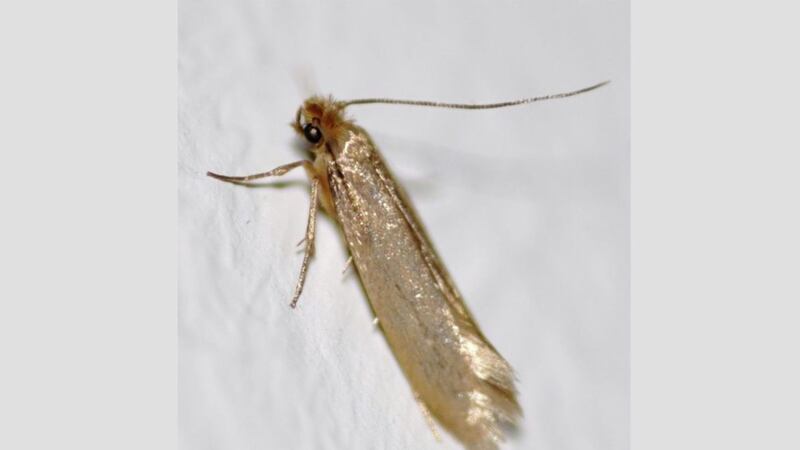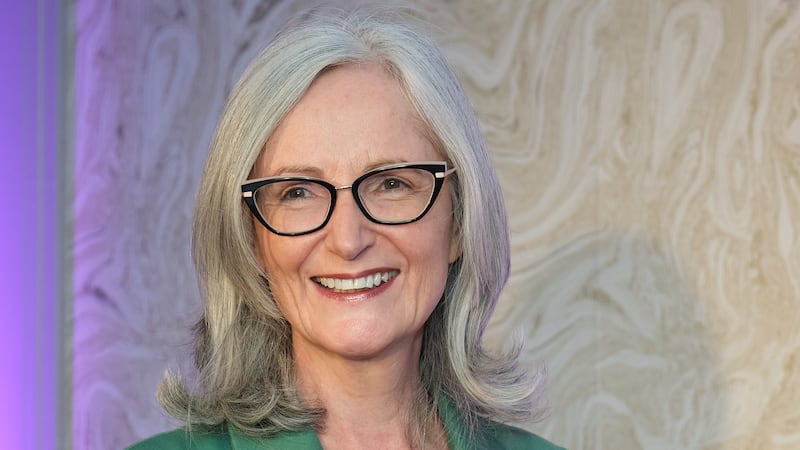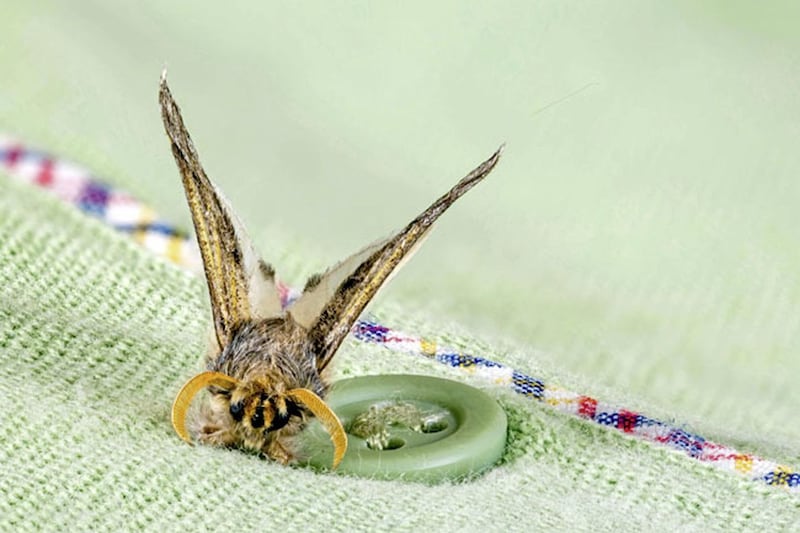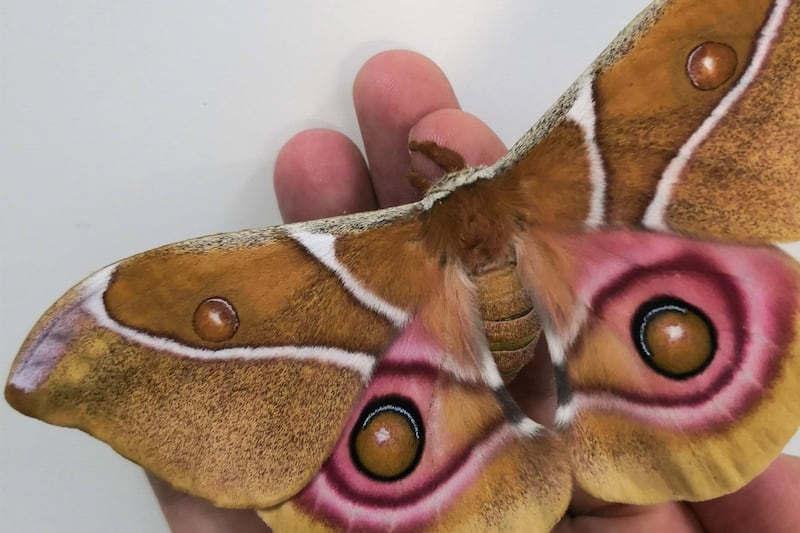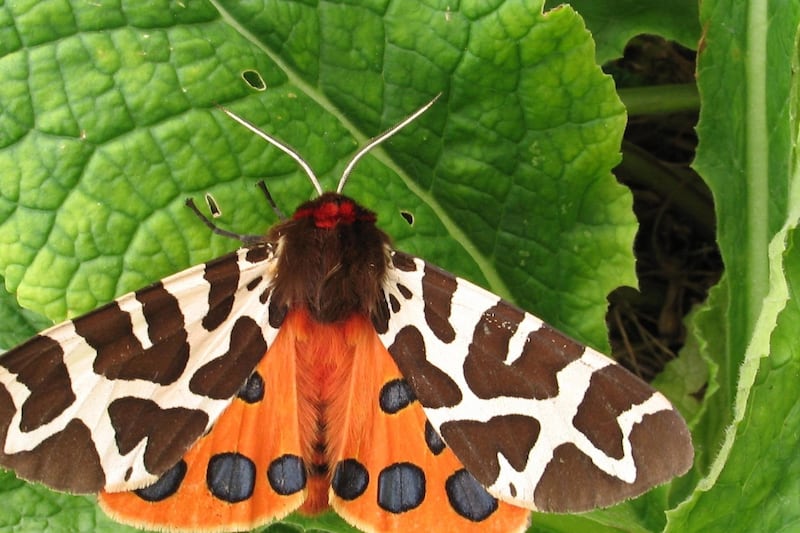THERE’S a full moon tonight and the moths will be flying. You’ll have noticed that they tend to fly towards light. Why?
It’s all to do with ‘phototaxis’. Some insects, such as beetles, scurry away from light into dark corners because they are negatively phototactic organisms; others enjoy positive phototaxis so the porch light, car headlights and the moon are attractive objects.
There’s a theory that light sources, especially the moon, give a reference point when it comes to navigating their flight path or, it’s thought, when in danger they fly upwards towards light to escape.
But there’s another more urgent moth story at the moment – a particular species are eating us out of house and home – or, to be more precise, out of wardrobe and cupboard.
The other day I was puzzled when my husband’s shirt had a fairly sizeable hole at one side. A cigarette burn? No-one in the house smokes and anyway there wasn’t any singeing round the edges. A couple of days later the same thing, a sizeable hole in my woollen shirt. Then it dawned on me – moths.
So many people are talking about them – stories from Fermanagh, Belfast, Donegal and Dublin, a noticeable increase in sightings. The National Trust has sent out a moth alert as little grubs munch their way through heirlooms, tapestries, rugs, curtains.
Moths are important when it comes to pollination and food for birds and bats and should be protected and appreciated and, with few exceptions, they are totally harmless. If you take time to look closely at a moth, it’s as beautiful as a butterfly – the intricate markings and the subtle muted colours.
However, it’s a gruesome tale when it comes to life cycle of the cloth-eating moth. The adult female lays between 100 and 400 eggs and these hatch into a maggot over four to 10 days. Then these larvae begin their life feeding off natural fibres for anything up to two and a half years. When the temperature is right and they feel like making an appearance, they spin a cosy cocoon, develop their wings and after about 10 days emerge to start the cycle all over again.
Some say global warming is responsible for this situation – certainly we've had the warmest winter since the 17th century – and central heating gives ideal conditions for breeding.
Numbers have doubled in the past five years, according to English Heritage whose expert conservators have seen the destructive impact of moths. Moth traps are best and you can get these online.
Natural fibres are the big attraction: wool, cotton, silk. It’s in these materials that the moth lays her eggs and, with three generations a year, that’s a lot of moths. Apparently of the 2,400 species in the UK only four will eat fabrics – including the tineola bisselliela living in my house!
What to do about it? Keep food in containers (there are pantry moths as well as clothes moths), clean out cupboards and wardrobes, hoover floors and carpets, don’t leave clothes and underwear lying around, dry clean or wash then seal in garment bags.
If you see signs of trouble, some say put the offending clothes into the freezer to kill the larvae works but if you can bear the smell, mothballs are a great deterrent as are bunches of lavender, basil and thyme. Prevention is better than cure but if you have a serious infestation there are local companies who will move in and deal with the situation.
IS BREAST BEST?
THE president of the Royal College of Paediatrics and Child Health says yes and reckons schools should be teaching children about the subject, even as early as primary school with boys and girls being part of the discussion.
"When we asked groups of children and young people what they thought about breastfeeding, we were really surprised – and a little upset – to hear the word 'yucky' being used by them," Professor Neena Modi said.
It opens up the whole area of breastfeeding, a biological norm, yet when teaching about the reproductive system in school are the breasts discussed in any detail? It seems not – yet.
Children need to realise that having a baby is wonderful but also an emotional event and learning how to nurse your son or daughter can be frightening.
An interesting statistic – mothers will breastfeed for the first five days but after that the vast majority turn to formula due to problems with the baby taking to the breast, concerns over the amount of milk being produced, pain, exhaustion, difficulties with expressing milk and worries over the baby's weight.
I know from experience it’s hard to get comfort and advice but then I didn’t know about the worldwide La Leche League, even thought it was established in the United States 60 years ago.
There are four La Leche League groups in Northern Ireland – Enniskillen, Portadown, East Antrim and Belfast. It has a name for being extreme and encouraging mothers to feed up to five years and over but this is not accurate; if a woman chooses to do so, this is her business but this volunteer support group more commonly helps mothers wean their babies at around 12 months.
They are there for women who suffer pain when feeding, distressed when the baby won’t ‘latch’ on to the nipple or when the mother is finding difficulty coming to terms with her new responsibilities on top of regular family life.
“Women with young babies come to us to meet other women in a safe environment where councillors have time to chat and advise,” leader and councillor Sarah McCann said.
Sarah also told me about the social pressures.
“Sixty years ago we were not allowed to include breast in our title! Fifteen years ago in America a top TV award couldn’t be handed over on camera because the man introducing it wouldn’t say ‘breast’.”
Hopefully we’ve come a long way since then but there’s a distance to go. Educating children is the way forward.
:: For information on meetings and local phone numbers: www.lalecheleagueireland.com/groups/belfast

